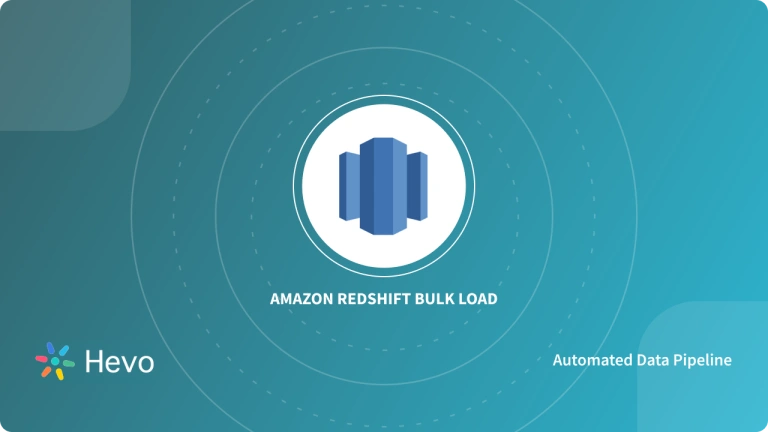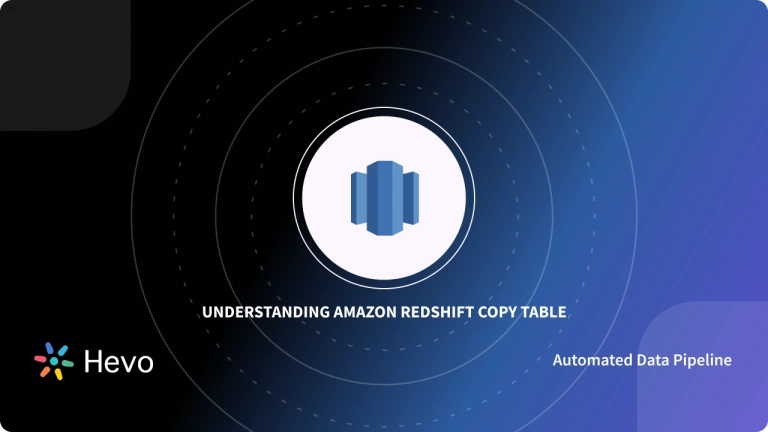Amazon EMR (Elastic MapReduce) is a tool from the Amazon Web Services stack that is used for big data processing and analysis. Amazon EMR provides an expandable and scalable solution for on-premise cluster computing.
Amazon Redhsift is a globally popular solution for Data Storge issues of companies. It is a Data Warehouse that operates on Cloud technology to provide vast space and high processing power for businesses to store and manage their data.
This article will introduce you to both Amazon EMR & Amazon Redshift and will discuss their key features. It will then take you through the 5 critical parameters that you should consider while comparing Amazon EMR vs Redshift. Read along and decide, which tool is best suited for your work!
Table of Contents
Introduction to Amazon EMR
Amazon EMR is a platform for running Big Data Tasks and operates on the Apache Hadoop framework. It utilizes MapReduce for processing huge data sets in computing environments that are set in distributed structures.
Amazon EMR consumes huge data sets using a Hadoop cluster consisting of virtual servers. These servers use Amazon Elastic Compute Cloud (EC2) and Amazon Simple Storage Service (S3) to facilitate their storage task. EMR owes its name to its dynamic scaling capability, using which administrators can scale up or down resources as needed.
Amazon EMR has many applications such as Analysing Logs, Implementing Machine Learning (ML), Bioinformatics, etc. Furthermore, it integrates well with Apache Spark and Apache Hive and provides you with faster analysis.
Hevo Data, a No-code Data Pipeline helps to load data from any data source such as Databases, SaaS applications, Cloud Storage, SDK,s, and Streaming Services and simplifies the ETL process. It supports 150+ data sources and loads the data onto the desired Data Warehouse like Amazon Redshift, enriches the data, and transforms it into an analysis-ready form without writing a single line of code.
Check out why Hevo is the Best:
- Secure: Hevo has a fault-tolerant architecture that ensures that the data is handled in a secure, consistent manner with zero data loss.
- Schema Management: Hevo takes away the tedious task of schema management & automatically detects the schema of incoming data and maps it to the destination schema.
- Minimal Learning: Hevo, with its simple and interactive UI, is extremely simple for new customers to work on and perform operations.
Explore Hevo’s features and discover why it is rated 4.3 on G2 and 4.7 on Software Advice for its seamless data integration. Try out the 14-day free trial today to experience hassle-free data integration.
Sign up here for a 14-Day Free Trial!Key Features of AWS EMR
Following are the key features of Amazon EMR:
- Easy to Use: Amazon EMR has a user-friendly UI that enables users to set up the cluster in just a few clicks. It also provides various configuration options to select and build a custom cluster.
- Reliable: Amazon EMR works on Hadoop architecture, and hence it follows all the fault tolerance and recovery behavior of Hadoop architecture.
- Elastic: Amazon EMR stands for Elastic MapReduce, which means it is very flexible and elastic computation. It automatically scales up and down based on the amount of data processing.
- Secure: Amazon EMR has enabled various security measures like firewall settings, VPC, etc., to make the data transmission safe and secure.
- Flexible: This tool provides you full control over clusters and each instance. It also lets you install new applications to the existing clusters as needed.
- Inexpensive: Its pricing plans are straightforward. It charges an hourly rate for each instance that you use.
Introduction to Amazon Redshift
Amazon Redshift is a cloud-based data warehouse that serves as a solution to manage big data storage issues for businesses around the world. Developed by Amazon, it offers an advanced archiving system that allows businesses to store petabytes of data in readily available clusters that can be queried in parallel.
Amazon Redshift is designed to work with a wide variety of data sources and tools. In addition, many existing SQL environments are easily compatible with Amazon Redshift Data Warehouse. Its architecture uses massively parallel processing (MPP), which explains the great processing power and scalability of Redshift. Thanks to its layered structure, Redshift allows you to process multiple requests simultaneously, reducing latency.
Redshift also takes full advantage of Amazon’s cloud server infrastructure, including logging into your Amazon Simple Storage Service (S3) account to back up your data.
Key Features of Amazon Redshift
The following features make Amazon Redshift a popular choice in today’s market:
- High Performance: Amazon Redshift, by design, delivers high-speed query performance on large data sets ranging from gigabytes to petabytes. Archiving and compression of data play a key role in reducing the quantity of I / O required for a query.
- Machine Learning: Amazon Redshift’s advanced machine learning capabilities ensure high performance and throughput, even with varying workloads or concurrent user tasks. that matter to your business.
- Scalable: Amazon Redshift is comfortable to use and can scale quickly as your needs change. A few clicks in the dashboard or a simple API call can easily increase or decrease the number of nodes you use.
- Secure: Modifying a couple of settings, you can easily configure Amazon Redshift to operate on SSL and provide secure data transmission. Moreover, it uses hardware-accelerated AES256 encryption for data at rest. If you choose to enable inactive data encryption, all data written to the drive will be encrypted, just like any backup. Amazon Redshift manages key management by default.
Comparing Amazon EMR vs Redshift
The following factors will help you compare Amazon EMR vs Redshift choose the best tool for your business:
1. Usage of SQL
Amazon Redshift functions completely on SQL for data exploration and analysis. It uses ANSI SQL to create tables, load data, and perform data analytics.
On the other hand, Amazon EMR is a computing framework that runs on Hadoop. It also provides an SQL interface from Apache HIVE to query Amazon S3.
2. Handling Unstructured Data
Amazon EMR is more capable of handling unstructured data. Amazon EMR, with the help of Apache Spark, can process unstructured data very effectively.
On the other hand, Amazon Redshift works well with Structured and semi-structured data. Since Redshift is based on the RDBMS concept, the data is loaded in tables and can be analyzed via SQL queries.
3. Data Transformation
The data transformation in Amazon Redshift is pretty easy. Any person with an SQL background can perform data transformation in Amazon Redshift.
On the other hand, in Amazon EMR, the user needs to be well versed with any programming language to write the code to perform Data transformation.
4. Scalability
Both Amazon EMR and Amazon Redshift are excellent in terms of scaling. Both provide options to enable dynamic scaling based on the load.
5. Cost
Amazon EMR is based on the use when in need model, which means you can instantiate the cluster when the processing is required and shut down it when not needed.
On the other hand, Amazon Redshift is available 24×7. The cost is more than EMR.
Conclusion
The article introduced you to Amazon EMR & Amazon Redshift and explained their key features. It also compared these 2 tools using 5 critical parameters. After going through the article, you have enough information to decide your preferred tool between Amazon EMR vs Redshift.
Hevo allows you to transfer data from 150+ Data sources to Cloud-based Data Warehouses like Amazon Redshift, Snowflake, Google BigQuery, etc. It will provide you a hassle-free experience and make your work life much easier. Try a 14-day free trial to explore all features, and check out our unbeatable pricing for the best plan for your needs.
FAQ on EMR vs Redshift
1. What is the difference between Redshift and EMR?
Redshift is a data warehouse service optimized for large-scale analytics, while EMR (Elastic MapReduce) is a big data processing service that runs frameworks like Hadoop and Spark for distributed data processing.
2. Is EMR a AWS service?
Yes, Amazon EMR (Elastic MapReduce) is an AWS service for processing large datasets using big data frameworks like Hadoop, Spark, and HBase.
3. What is the Google equivalent of Redshift?
The Google equivalent of Redshift is BigQuery, which is a fully-managed data warehouse designed for real-time analytics on massive datasets.











